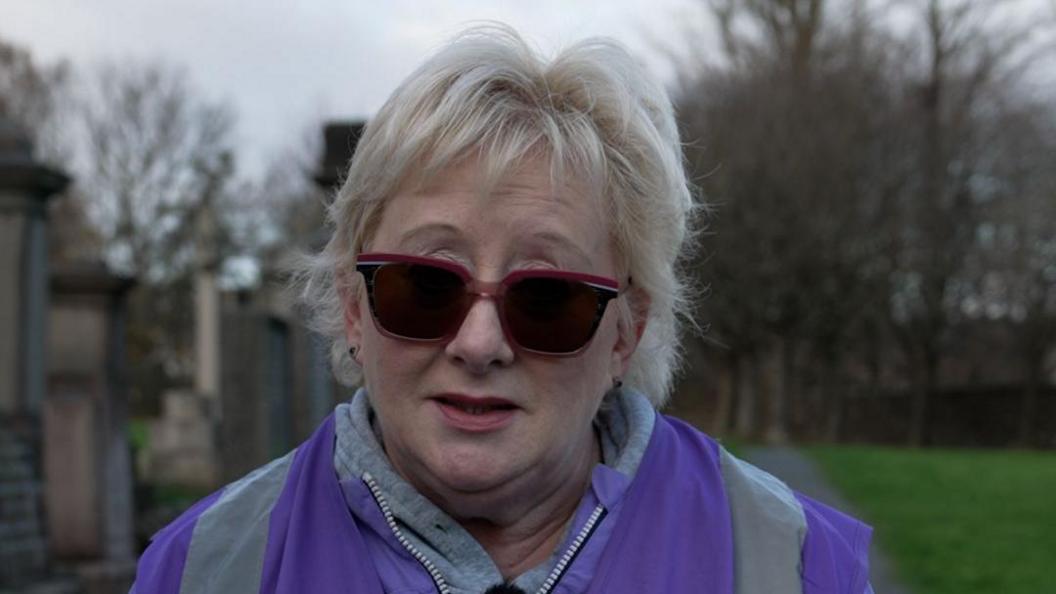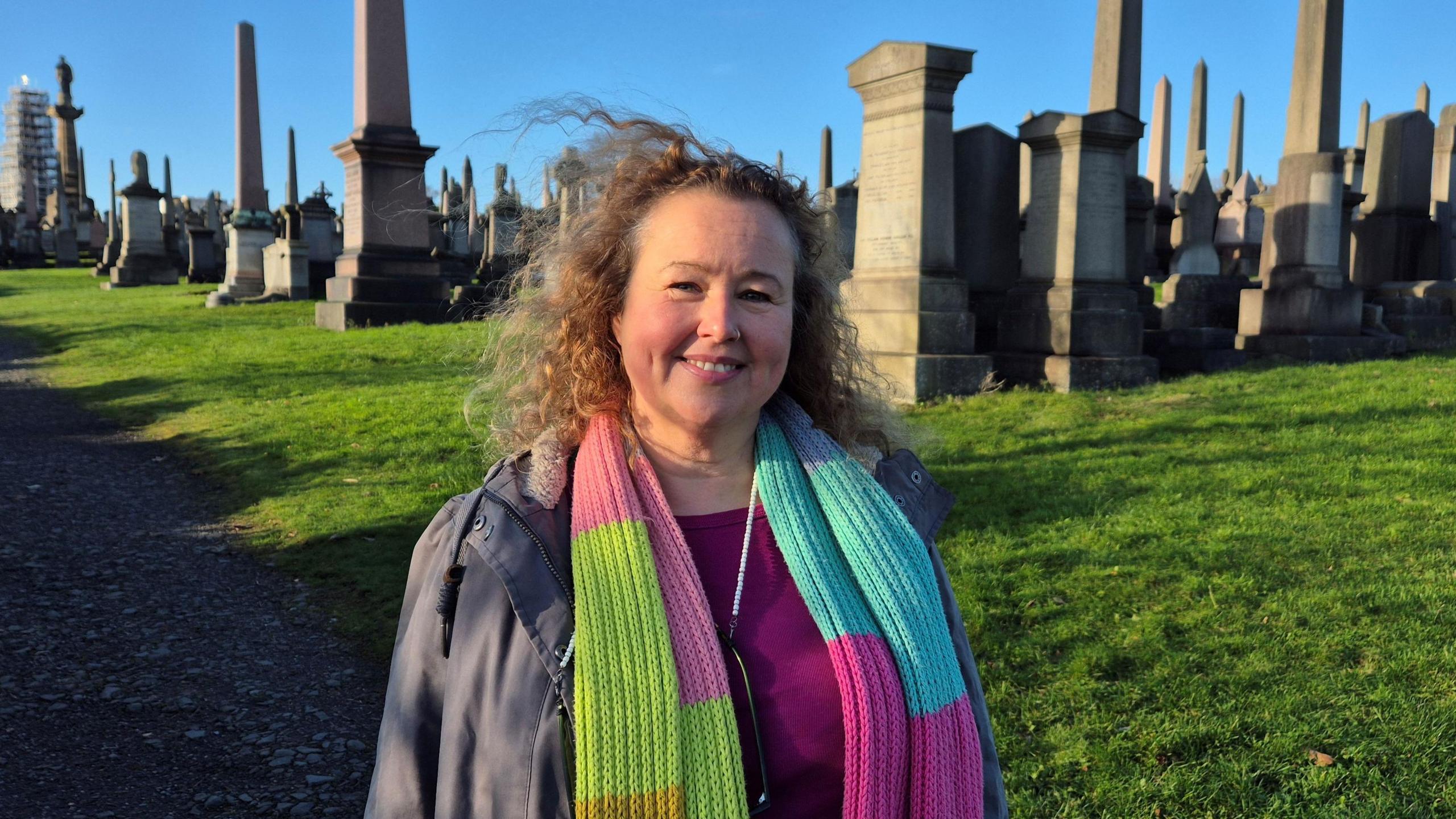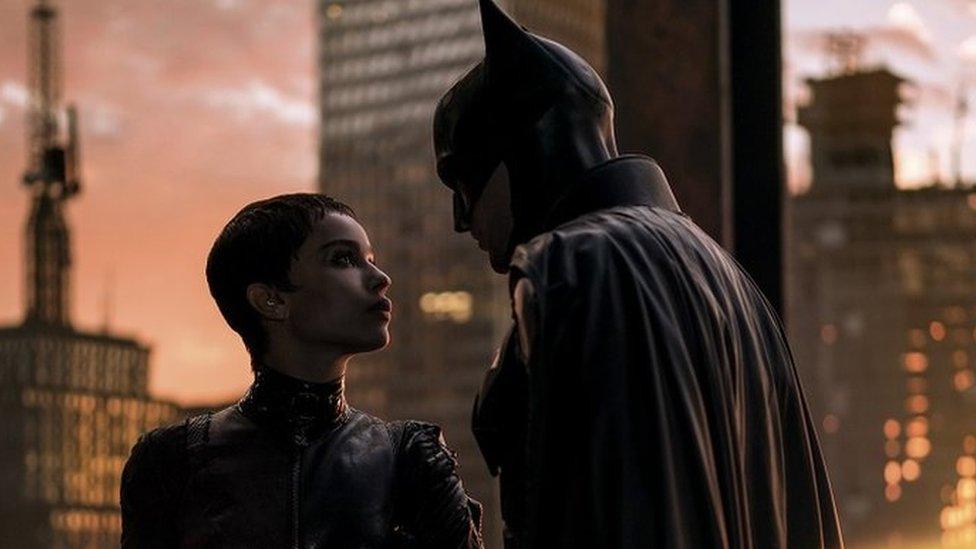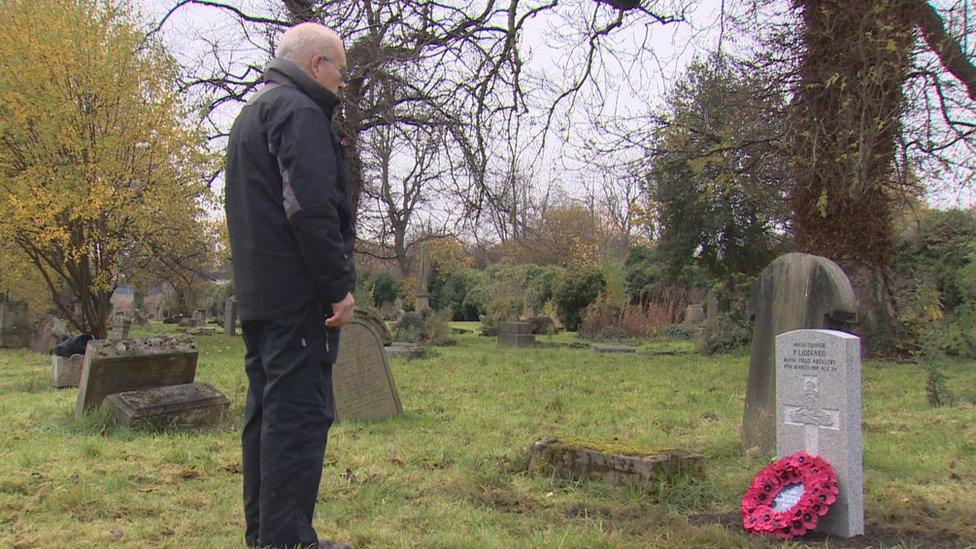Would a new gate ruin Glasgow's Necropolis - or give it new life?

The Glasgow City Council plan to place a new entrance at the Necropolis has sparked support and opposition
- Published
On a cold, windy November day among the graves and tombs of long-gone souls, Annette Mullen is full of life about the future of Glasgow's Necropolis.
"The memorial to firefighters who lost their lives on duty in Glasgow is here. Imagine people mourning that loss and cyclists are speeding past with fast food deliveries," she says.
Ms Mullen's concern is focused around plans by Glasgow City Council to install a new entrance on the eastern side of the Victorian cemetery - fearing more footfall will increase vandalism, drug-taking and disorder.
However, there are plenty of supporters of the plan - arguing it will open the historic site up for residents who currently struggle to access it.
The A-listed 37-acre site has about 50,000 people buried within, from large memorials to the likes of John Knox to smaller tributes to fallen soldiers, marked by small poppies.
Alexander "Greek" Thomson and Charles Rennie Mackintosh are among the designers with work there, and the aforementioned firefighter sculpture marks those who died in tragedies such as the Cheapside Street fire.
Yet the cemetery currently has only two official entrances, via a main gate near Glasgow Cathedral and another off Wishart Street. People are often seen clambering over the eastern wall into the grounds.
Now the city council intend to install a £210,000 third entrance, at one of three possible locations along the eastern wall.
This would connect the graveyard with the east end, with the money coming from the Dennistoun Neighbourhood Infrastructure Fund.
According to Greens councillor Anthony Carroll and SNP councillor Allan Casey, who instigated the plan, the move would let more people experience the Necropolis and provide another way of connecting parts of the city.
Is security the price of access to Glasgow's historic Necropolis?
For Dennistoun resident Onya Attridge, the plan would be a welcome move and open up the heritage and history of the site to more people - as well as letting them experience sensational views, showcasing the city that can be seen from there.
"It should be appreciated by people within Glasgow – and especially by those who share the same postcode as the cemetery," argues Ms Attridge, who regularly walks through the grounds.
"There's people on the other side of the wall who might not normally come in, because an extra 10-minute walk around Duke Street is actually quite difficult for some people.
"You'll have more people walking through the Necropolis, looking at these names, and the different sculptures - perhaps it'll make them want to look up who some of these people are.
"That means it's not just about the dead here – it's about the living too, and keeping the dead's memories alive through them."
Ms Attridge told BBC Scotland News her husband finds it hard to access the Necropolis - where a scene in 2022 blockbuster The Batman was filmed - because of health issues, and a new entrance would help people like him, or with disabilities, to get in.

Annette Mullen fears that more people going into the cemetery will result in more vandalism
Such arguments do not convince Ms Mullen though. She is the chairwoman of the Friends of Glasgow Necropolis, external group, a group boasting 147 members and 12 volunteer tour guides.
She is one of those guides, and a passionate advocate of the Necropolis as a special part of the city.
Her concerns are multiple, with one key issue being more people coming through the gates would mean more risk of vandalism - a growing concern already at the grounds.
A decade ago senior police in Glasgow called for CCTV at the Necropolis to deter vandalism, but the site's topography has traditionally make such moves difficult.
"We are delighted to have as many people come and visit the Necropolis, but two entranceways have suited this cemetery for 200 years," Ms Mullen says.
"Why do you need another one that's going to be unmanned? Without volunteers this place would be a disaster zone as it is."
Ms Mullen says the group deals with vandalism, as well as people using the graveyard to drink or take drugs in - something that has worsened in recent years.

Greg Hawke supports the plans for another entrance to the Necropolis
The charity has recently paid for 19 headstones to be re-erected, after they were knocked down, and Ms Mullen believes another entrance would increase these problems,
Greg Hawke, a Dennistoun resident who often walks his dog at the Necropolis, believes some of those worries represent "outdated thinking" about Dennistoun as an area.
"To have a safe and car-free walking route from Dennistoun right through to the city centre via a world-class heritage site is a great idea," he says, as his dog bounds around nearby in the early afternoon sun.
"People on the other side of the wall will visit far more and that's good for the Necropolis, it's good for the heritage and it's good for making it a safer place - with more people being around."

The Necropolis is a popular destination for tourists
Online debate around the idea has often veered into issues of class, with the suggestion that east end residents are being looked down upon.
Ms Mullen, who is herself from the east end, insists that is not the case.
"I want everybody to come to the Necropolis as it's magical and very, very special – but there are parts here that are just inaccessible for some, due to the paths and the ground."

Onya Attridge believes a new entrance would let more people discover the history of people buried there
She also cites early plans for a cycle path being there, something the local authority has said will not now take place.
Turning it into a shortcut for people will take away from the "peace and tranquillity" currently there, she argues, while the money for the gate could be better spent elsewhere.
Ms Attridge disagrees, saying such a move would simply be consistent with the graveyard's original values when it opened in 1833.
"This was conceived as parkland for the living and the dead. I think it's very shallow to say people shouldn't be using it as a walkway."
Feedback from a consultation on where to place a new gate is currently being evaluated by the city council.
Related topics
- Published3 March 2022

- Published11 November 2020
